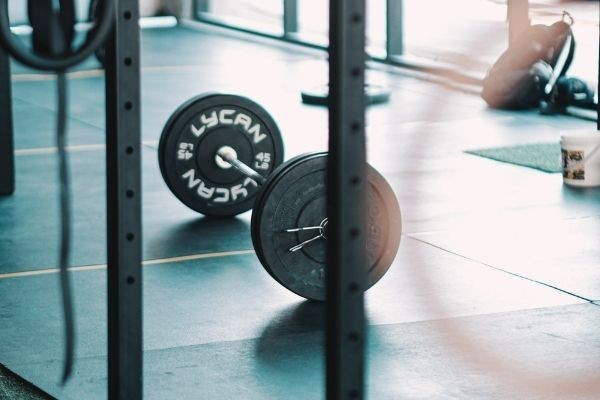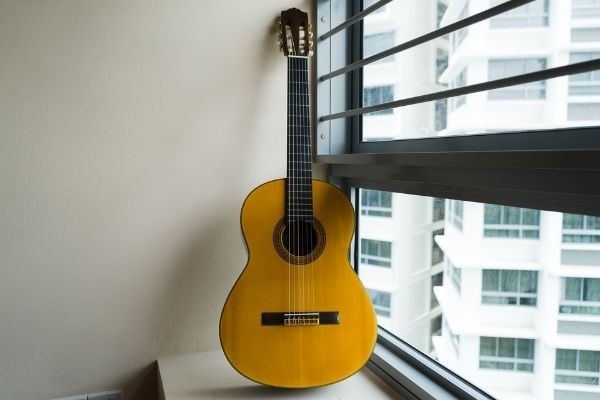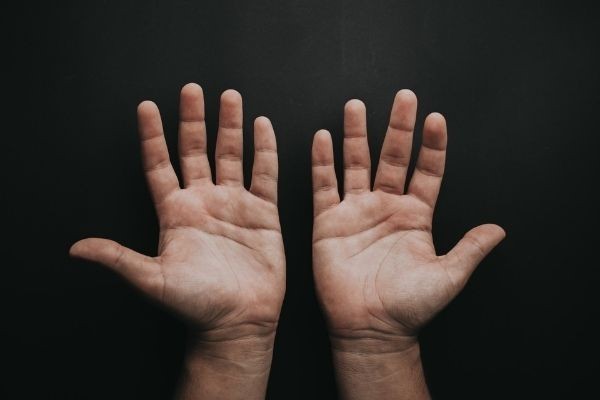3 Secrets To Learn Fingerstyle
Guitar

So you want to learn fingerstyle guitar, huh? I don’t blame you. Fingerstyle is a technique that opens up a new world for many guitarists. You can pluck individual notes much more easily with your fingers than with a pick, and you an also play multiple (non-adjacent) strings at the same time, giving you a ton of options for new repertoire.
Unfortunately, many guitarists find fingerstyle somewhat intimidating. If you come from a background of strumming chords, you might think fingerstyle is a lot like starting over. And in a way, it is like starting over. Fortunately, only one of your hands needs to learn something new.
I’m of the belief that anyone can learn fingerstyle if they put their mind to it. If you follow the tips outlined below, you’ll be well on your way to fingerstyle proficiency, if not mastery.
How you’ll benefit from learning classical guitar

Above all else, aspiring fingerstyle players will learn excellent playing technique. Classical technique has been molded over hundreds of years, so there’s a lot of thought that’s gone into it. Everything classical players do, from the way they hold the guitar to the way they curve their fingers, has a specific reason. Given that their repertoire is highly difficult to play, classical musicians can’t afford to adopt bad habits or do anything in a less than optimal way.
Even if you could care less about classical music, it will only help your playing to get this sort of rock-solid foundation for fingerstyle. I tried to learn fingerstyle on my own for a long time, but once I started to get formal classical training, I improved more in a few months than I had in years. The strength of classical guitar is that its history goes much deeper than the relative surface-level tradition of modern steel-string fingerstyle.
Plus, if you’re a guitar player, don’t you want to learn more about the history of our beloved instrument? If you learn classical, you’ll be able to play pieces from the 16th, 17th, 18th, and 19th centuries!
Looking for some free classical guitar lessons online? I’d suggest you check out this website to get started!
Give your fingers a good workout

You should think of fingerstyle practice as a kind of workout for your right hand. It takes time to develop powerful and controlled finger strokes; there’s more to it than just hitting the right strings at the right time. It’s how you hit the strings that counts! You should be willing to do a lot of reps of index, middle, and ring fingerstrokes, gradually building up your strength. Be sure to isolate the thumbstroke as well.
Just make sure you stay patient. You don’t go to the gym a couple of times and expect to wake up with a new body. Similarly, you’ll need to plug away with your right hand fingers, focusing on getting a great attack on the strings, for at least a few months before you see a big difference in your playing
The last thing I’ll mention on this point is that expanding your repertoire isn’t important in the early stages of fingerstyle. Don’t focus too much on learning a bunch of new material. Remember that no one is impressed with someone who can play 100 pieces badly. At this stage, you should be perfecting your technique; this way, you’ll take a superior playing mechanism to any given piece you’d like to learn.
For more tips on how to practice effectively, including an example practice schedule, check out this post!
1) Study Classical Guitar Technique

Classical guitar is the ultimate fingerstyle tradition. If you’re looking to establish a good technique right from the start (which I highly recommend), you really can’t do better than to get yourself some classical training.
In fact, many steel-string fingerstyle guitarists including Marcin Patrzalek actually developed their chops through classical training at an early age. There’s no rule that if you study classical guitar for a few months or years you can’t switch into a style of music you’re more passionate about.
In my case, I was attracted to fingerstyle guitar through being exposed to Sungha Jung’s arrangements of popular music. I wanted to do the same thing. Realizing I needed better technique in order to play more like him, I began to study classical guitar.
As it happened, I fell for classical because I loved the music more than I loved popular music. That can happen. However, many people transfer their classical training to a variety of other styles including pop, jazz, blues, folk, rock, and so forth. In short, you don’t need to be married to classical to benefit from the training!
2) Isolate The Right Hand

Your right hand is your best friend when it comes to fingerstyle. In the beginning, it’s absolutely key that you take it slow and don’t complicate things. One great way to simplify what you’re doing is to work on your right hand alone.
This tactic is very common for pianists, who play a different part with each hand. They often learn the left-hand part separately from the right-hand part, and finally bring the parts together. Guitarists should do the exact same thing. If you focus on your plucking hand in the early days of learning fingerstyle, you’ll be much better off than if you were overly concerned with getting both hands working together.
When you’re just starting out, I recommend you practice plucking the strings with each of your fingers, one at a time. Start with your index finger and practice getting a good attack on each string, top to bottom. Then repeat this with your middle and ring fingers.
3) Listen To Yourself

Many guitarists are more concerned with playing notes than they are with music. They’re staring at their fretting hand, trying to switch positions fast enough; they’re checking up on their right hand, or maybe they’re looking at the tab or sheet music in front of them. In many cases, the last thing they’re doing is listening to the music they’re playing with a critical ear.
Fingerstyle, like all of guitar playing, is ultimately about music-making. If we’re not good musicians, then we’re not any good at fingerstyle, are we? Of course, the key to being a good musician is to care about the music you’re making more than any other part of the music-making process.
In other words, you should always be paying more attention to the sounds you’re making than what your hands are doing. You might be surprised at how well your fingers can solve problems on their own once you demand that they make good music!
And listen closely to others…
If you’re learning fingerstyle guitar, I encourage you to spend some time watching and listening to other players. The better the player you’re listening to,
the more you’ll learn about what you can accomplish on the guitar.
Watching great guitarists is most helpful if you focus less on their hands and more on the music. Many of us are dazzled by the amazing finger speed that experienced guitar players have, but if we concentrate too much on the visual side of things, we forget that the fingers are just a means to an end.
See if you can hone in on the music itself, and try to reproduce that same quality of sound in the practice room!
Conclusion
No one goes from zero to hero in fingerstyle in a short time. If you’re just starting out, you’re in for a long and exciting journey. You might be discouraged at times, but bear in mind that everyone goes through challenging periods of learning guitar.
Guitar may be easy enough to pick up and play, but it’s really difficult to play well. I’m sure you’ll find that this especially applies to fingerstyle guitar.
As always, remember to practice slowly. Best of luck plucking away!



